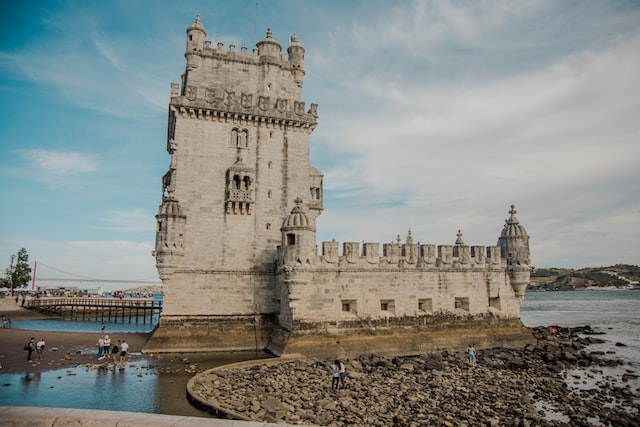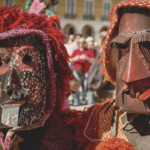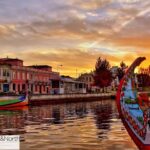The best places to visit in Portugal on a road trip?
Here at the Getaway Van we love to give you ideas on where to go on your road trip. Sometimes clients want to go a certain direction south, north, interior, other countries but they don’t know what are the best places in Portugal to really check out. What is truly unmissable?
So we have been searching for you. To help you all not miss out on awesome adventures we have put together some of the best places to visit in Portugal on a road trip from Porto to the Algarve. Some are from clients, some from bloggers some from the Getaway Team itself.
So come and explore North to South the best places to see in Portugal.
Porto
There are many many things to see and do in Porto. Hometown of the Getaway Van we recommend you take a few days to get to know the real Porto before you set off on your road trip.
Some highlights include
Livraria lello – book shop.
You need to buy tickets to enter this bookshop but you can see why it is becoming more and more popular with visitors as it is simply stunning. It inspired none other than J.K. Rowling in the Harry Potter books.
Praça Ribeira
You cannot come to Porto and miss out on Praça Ribeira. It is always a hive of activity and is stunning day and night with amazing bridges over the water, with boat trips and restaurant’s. Definitely take your time and soak up the atmosphere here.
Jardins do Palácio de Cristal
There rae many great parks in Porto but this ne is my favouite just for the amazing views of the Douro river and peacefulness despite being in the centre of Porto.
Arouca Geo Park
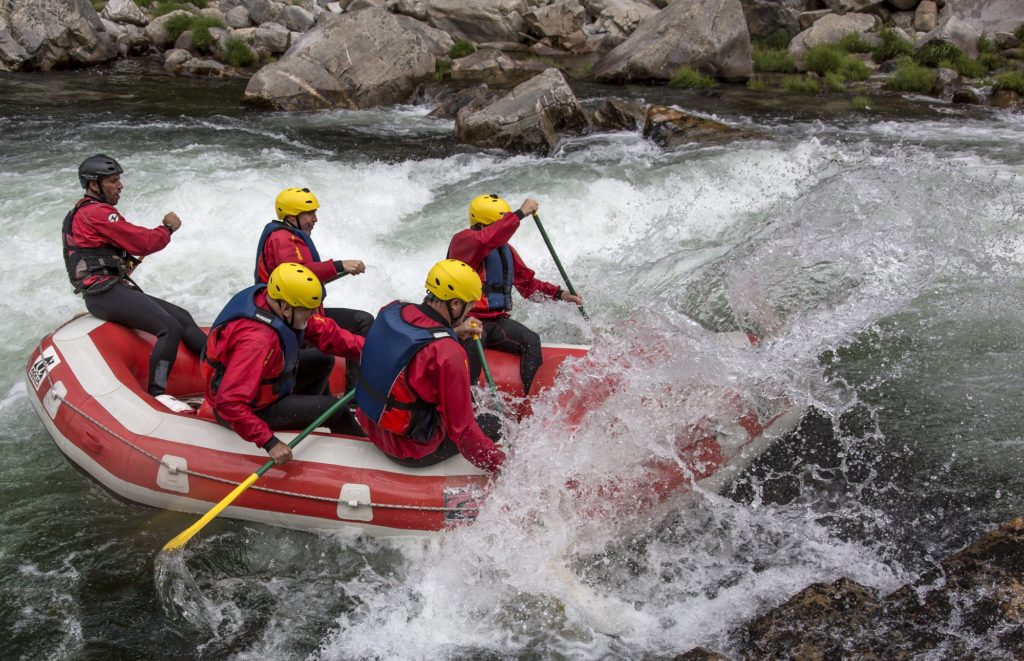
Arouca Geo park has many many different things to see and do. Just this year the world’s longest suspended pedestrian bridge opened in the Geo Park, waiting eagerly for those who dare to cross it. Here at Getaway we are partners with a company ‘Visit 516’ who will guide you across this adventure seekers dream, so you can get a discount, check out our partner section on the Getaway website.
If walking is your thing there is the Paiva Walkway and many other hikes that you can do to truly see the beauty of this place. For those who want more adventure there are various adventure sports available to do such as rafting, kayaking, canyoning, climbing and mountain biking, all in glorious surroundings of the park.
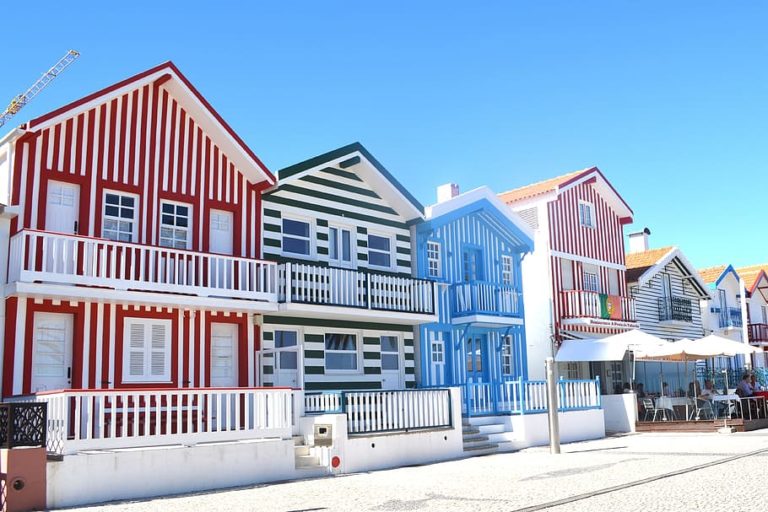
Aveiro | Costa Nova
This wonderful and unique place only in Aveiro
Often referred to as the “Venice of Portugal” due to its colourfully painted boats and winding canals, the charming town of Aveiro nevertheless has a unique personality all of its own. Located in central Portugal, just 75 kilometres south of Porto, this popular day trip destination is situated around the Ria de Aveiro lagoon famed for its salt, seaweed and abundant fish.
With an interesting architectural heritage, ancient maritime history and spectacular natural wonders, there is no shortage of things to do in Aveiro. Full of Art Nouveau architecture, opulent churches and a plethora of interesting museums, Aveiro charms with its pretty cobbled pavements and houses covered in colourful Portuguese tiles.
Of course, the highlight of any visit to Aveiro is taking a traditional boat ride along one of its canals to discover Aveiro’s maritime past. Originally used for harvesting seaweed, the colourful local boats, known as moliceiros, are brightly painted with illustrations depicting traditional Portuguese life.
Coimbra
The portuguese Oxford
On the high banks of the Mondego River, Coimbra is a city with the oldest university in the country.
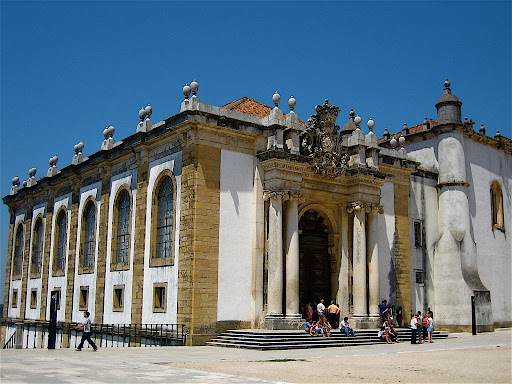
Biblioteca Joanina
This esteemed Baroque library is on the Paço das Escolas, where Portugal’s earliest kings once lived.
It goes back to the 1720s and needs to be seen to be believed.
There are more than 250,000 volumes here, dating from the 1500s to the 1700s and dealing with history, geography, medicine, law and science.
One of the curious things you’ll learn about the library is that it maintains a colony of bats bred to eat insects that would damage the books.
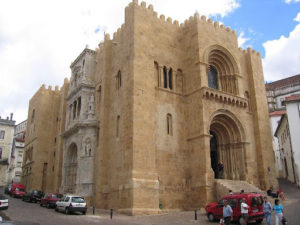
Old Cathedral of Coimbra
Back when Coimbra was a frontier between Christianity and Islam, King Afonso Henriques established this Romanesque cathedral.
It was built not long after his victory over the Moors at the Battle of Ourique in 1139, and unlike other churches of its day has kept a lot of its Romanesque character.
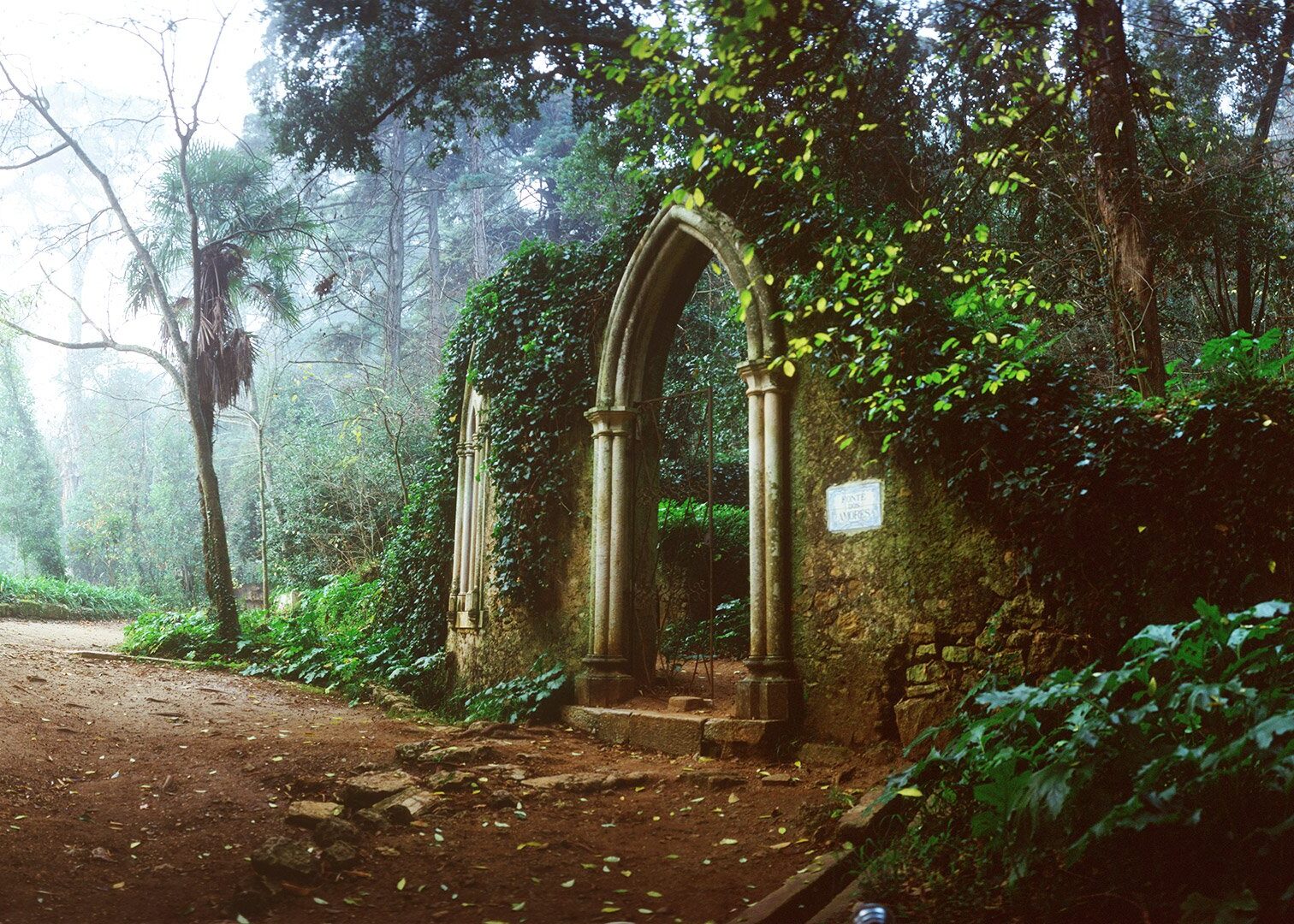
Quinta das Lágrimas
That footbridge is named for the story of the 14th-century figures Pedro I the future king and Inês de Castro, his wife’s lady in waiting.
They had a long affair, with Inês bearing four children, before she was assassinated in Coimbra on Pedro’s father’s orders in 1355. The park at the Quinta das Lágrimas (Estate of Tears) is supposedly where she died.
The story goes that she was killed at the fountain; her blood is meant to have stained the stone on the fountain.
Serra da Estrela
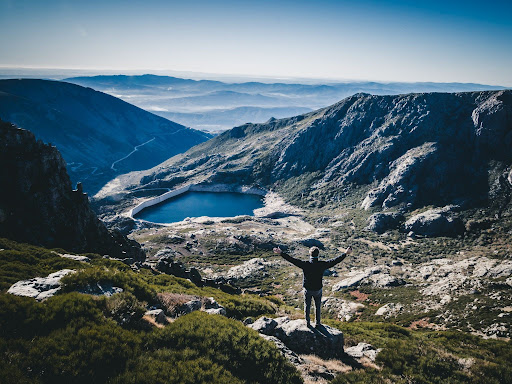
Serra da Estrela Natural Park is the biggest protected area in Portugal, with 101 000 hectares. When you visit the park you may stroll around the incredible landscape, similar to the Alps , discover the highest point (Tower) in mainland Portugal (1993 metres) and ski in the only ski slope in Portugal.
Don’t leave without tasting the “Queijo da Serra” (a sort of cheese) and without visiting Manteigas, Sabugueiro and Linhares da Beira villages.
The 12 Historic Villages of Portugal
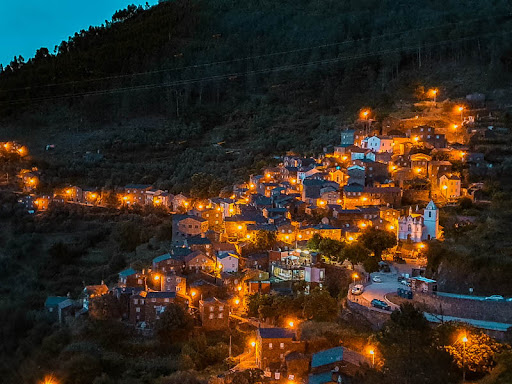
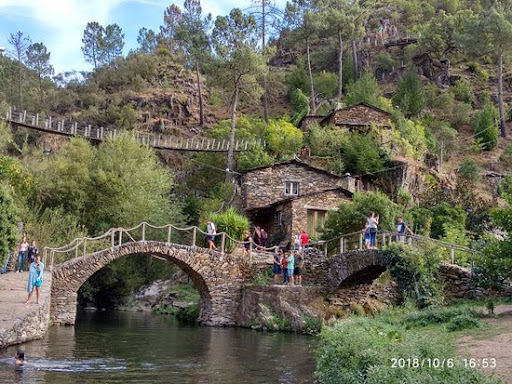
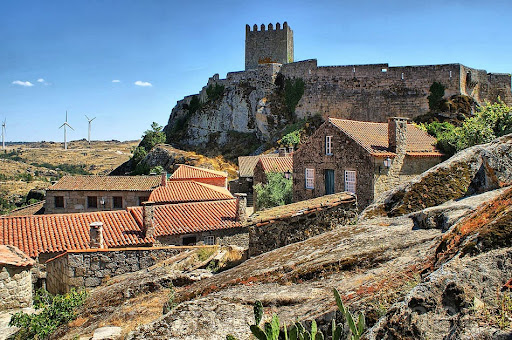
The 12 historic villages are located in Central Portugal, around Serra da Estrela Natural Park and the Spanish border.
Most of these villages were built in order to strengthen this region and prevent the enemy to settle in.
These are the 12 historic villages of Portugal: Almeida, Belmonte, Castelo Mendo, Castelo Novo, Castelo Rodrigo, Idanha-a-Velha, Linhares da Beira, Marialva, Monsanto, Piódão, Sortelha and Trancoso.
If you don’t have the time to discover all of them (you’ll need at least 3, 4 days), than you should visit Monsanto, Sortelha and Piódão villages.
Monsanto is considered to be the most Portuguese village of Portugal since 1938. You’ll know why when you visit it! Lose yourself in the narrow streets and admire the houses that were erected between rocks, visit the castle, São Miguel chapel and the community oven.
Piódão is one of the most beautiful villages in Central Portugal, mainly because of the schist houses that are displayed in an amphitheatre way. With the sunset and lights turned on, you’ll feel like watching a Nativity set.
Sortelha village was the one that amazed me the most when I visited the historic villages. When you visit this village you’ll travel back in time, to the medieval period, and admire the granite houses that blend in the rocks and the beautiful castle.
Mira de Aire Caves
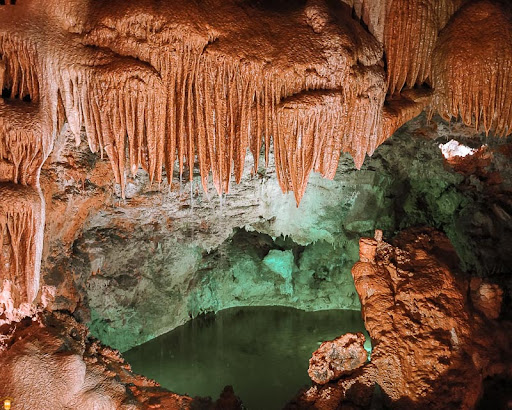
Portugal has many caves but, if you must visit one, go to Mira de Aire caves.
Mira de Aire caves were elected in 2010 as one of the 7 natural wonders of Portugal. This complex of rare beauty is 11 km of extension and was found in 1947.
During your visit, you’ll discover 600 metres of this natural beauty climbing down 683 steps which means 110 metres deep. Don’t panic, at the end of the tour you won’t need to climb your way back – there’s an elevator that will take you back to surface.
You can visit the caves everyday of the year, in the village of Mira de Aire, 15 km from Fátima. To know the opening hours and the prices, check the official site.
Batalha Monastery
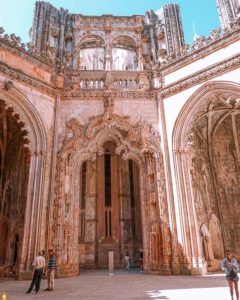
If you must visit just one monastery in Portugal, than my suggestion would definitely be Batalha Monastery.
Batalha Monastery is one of the most beautiful architecture gems in Portugal and in Europe. The construction of this amazing monument began in 1386 and ended in 1517.
During your visit you’ll have the chance to discover the beautiful church, free of charge, but don’t hesitate to pay for the ticket to visit D. João I and king Afonso Cloisters, the founder chapel and the unfinished chapels also known as the imperfect chapels.
Fatima -By Stephanie from History Fan Girl
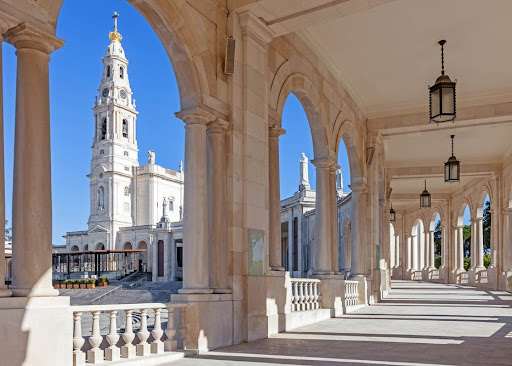
Portugal is full of great places to see and breathtaking UNESCO World Heritage Sites, but it’s the small town of Fatima that really took my breath away. While it is certainly pretty, there is a more important reason to come here than just beautiful architecture: it is the site of one of the Marian Apparitions.
A Marian Apparition is an event that happens in the Catholic Faith, where they believe the Virgin Mary has appeared on Earth to deliver a message to mankind. The apparition that took place here was in 1917, during World War I. Mary is believed to have appeared to three small shepherd children to pass on a message about love and peace.
Today the three children have been declared saints, and a shrine has been built in the town. While two of the children died in the Spanish Flu epidemic, one of the girls went on to become a nun and live into the twenty-first century. The Sanctuary of Our Lady of Fatima receives between six and eight million religious pilgrims a year.
Nazare -By De Wet from Museum of Wander
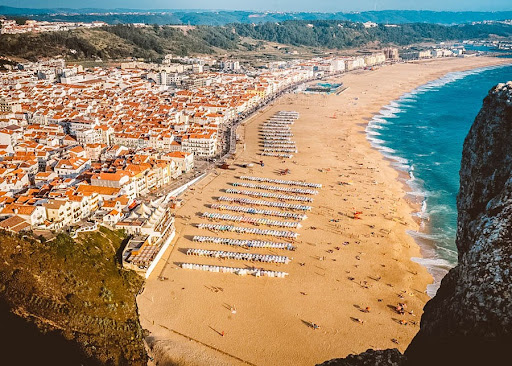
Halfway between Lisbon and Porto you’ll find the stunning seaside town of Nazare. Here on the Costa da Prata, or Silver Coast, the Atlantic ocean meets the land at her most powerful. Nazare is home to the largest surfing waves in the world, but you should still come to Nazare even if you’re not a surfer.
The lighthouse on Praia do Norte is where you can see the monster waves crash into the cliffs. The lighthouse is also home to a small surf museum with surfboards and stories of famous surfers who had braved Nazare’s monster waves.
The small plaza in Sitio, a short walk away from the lighthouse has a sweeping view over the ocean, beach and red tiled roof tops of Nazare below. Also on the plaza is the Igreja Nossa Senhora da Nazaré, a church frequented by pilgrims. The church has a small statue of the Virgin, which they say was carved by Virgin Mary’s husband in Nazareth. This is the reason why the town is called Nazare.
Ride the funicular down to Nazare where you’ll find some amazing seafood restaurants and cafes along the beach.
The beach in Nazare is much calmer than on Praia do Norte and is perfect for swimming. A walk along the promenade will take you past traditional fishing boats and woman drying the catch on racks in the sun. Seaside Nazare is a beautiful town and still quite traditional, as you’ll see by the woman still wearing their traditional dress of 5 underskirts.
Nazare is a beautiful small town in Portugal with excellent beaches, fantastic food and friendly people. .
Tomar
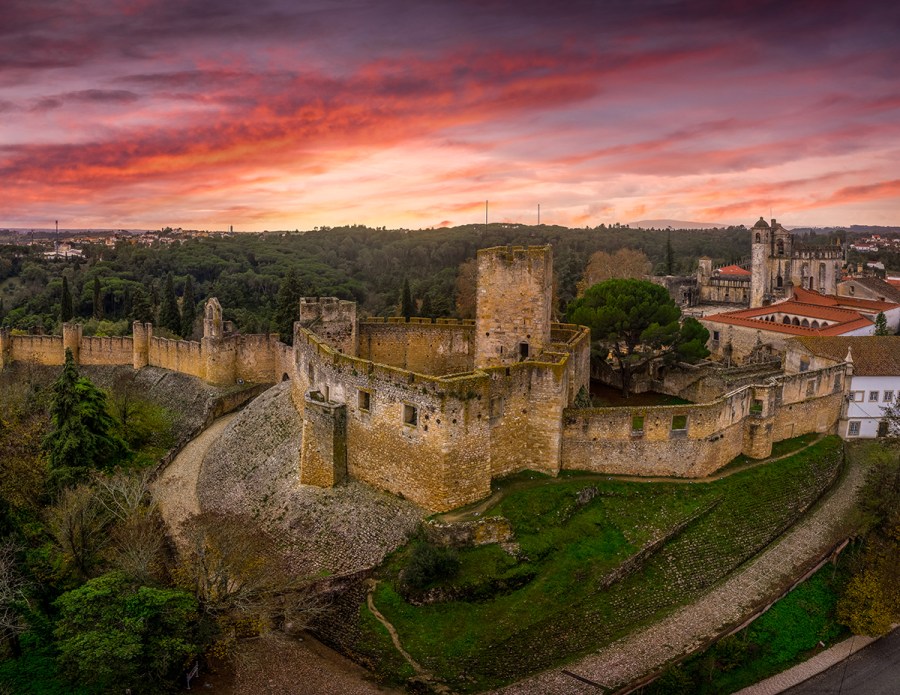
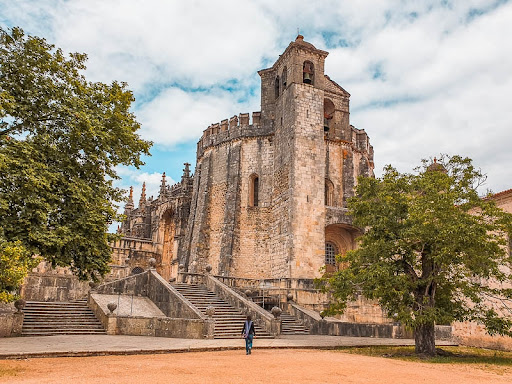
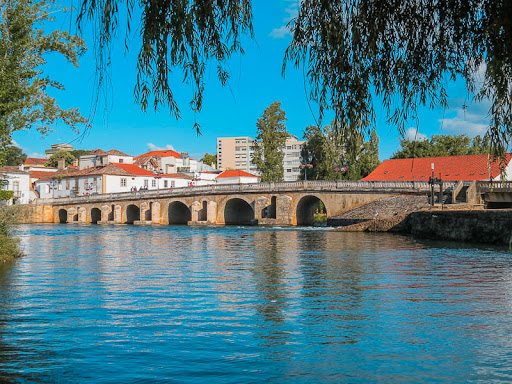
Tomar is a city full of charm, a hub of arts and creativity, an enviable cultural center. The panoply of historical, religious, heritage, cultural and scenic points of interest in the city are strong arguments that justify visiting Tomar. And the surroundings of Tomar add to it a few more natural arguments of weight.
Every Portuguese should know the magnificent Convento de Cristo! Stroll through the old Jewish quarter to the monumental Praça da República. Hear the bells of St. John the Baptist. Be part of the relaxed spirit of the people of Tomar in the Corredoura. Let yourself be embraced by the charms of the Nabão River. Relax in the green of Parque do Mouchão. Cross the Old Bridge and enjoy the views of a city mirrored in the river and crowned by its Castle.
Obidos -By Ann from The Road Is Life
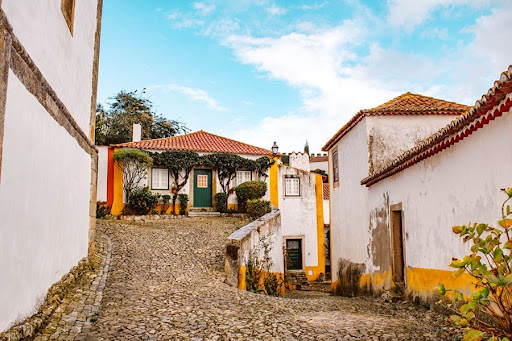
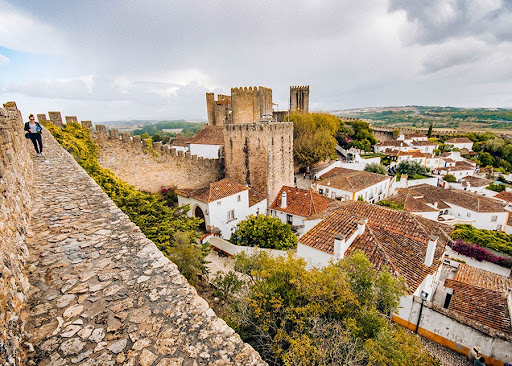
Obidos Castle has protected the region for over 800 years and has been named one of the 7 wonders of Portugal! Exploring the streets of the town center is another huge highlight. It’s only small but wandering through the maze of narrow streets will lead you to all the prettiest corners and hidden secrets around the town.
As previously mentioned, Obidos makes an excellent day trip from Lisbon but it’s also the perfect stop on a road trip from Porto to Lisbon. Spending a few nights in Obidos allows you to explore the town when it’s quieter in the morning and evening, ie. before and after the day trippers arrive.
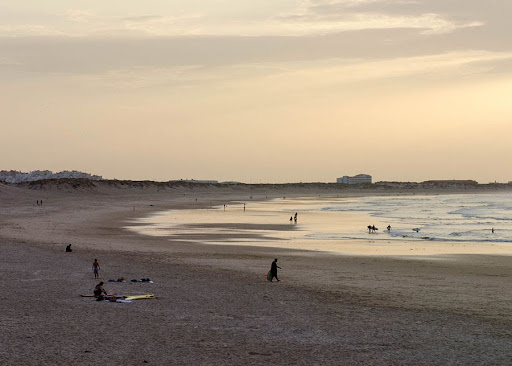
Baleal -By Anne from Travellers Archive
Over the past few years, Portugal has gained massive growth and popularity among travellers. This might be due to its beautiful capital Lisbon with its old trams, curved alleys and picturesque sunsets. It might also be due to its rough coastline with dreamy villages and magical waves or simply a combination of it all.
We found our favourite village in Portugal: Baleal. This cute surfer town is not far away from Peniche but less famous and, thus, even sleepier and quieter. Start your day by renting out some surfboards at Bruno’s beach bar. Hit the waves until you’re ready for a much needed drink. Bruno’s is an awesome place for coffee, cake and, well, a refreshing glass of beer.
Once the sun sets, you might want to walk down the beach and check out the “Taberna do Ganhao”. This cute little restaurant does not only serve the best octopus salad, but it was also the very first restaurant here. Enjoy an amazing dinner while you watch the ocean and refuel.
Baleal is also a great location to check out other even smaller Portuguese villages nearby. If you are lucky enough, you may even see the huge waves at one of the most popular big wave surfing spot Nazare.
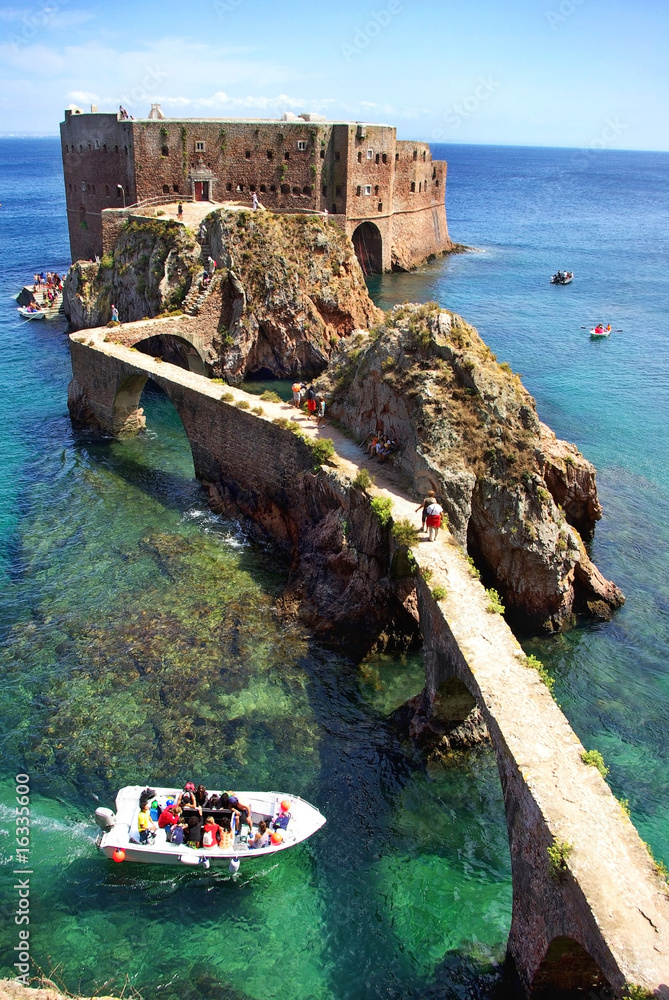
Peniche | Berlengas
In Portugal’s Centro region, Peniche is a beach destination with many feathers in its cap. First, the raging sea and the lie of the land make this surf central. The best of many supreme beaches is Praia dos Supertubos, which has a tubular wave fit for big time international events.
Peniche has also been a port since the Early Modern Age, when a fort was constructed to defend it.
Peniche is still a fishing port, the fish and seafood could not be fresher. And on top of everything, you also have to make time for a voyage to the Berlingas Islands, a natural reserve off the coast.
A trip these islands 10 kilometres offshore is one of those things you simply have to do in Peniche.
The archipelago is a natural reserve, with a colony of puffins and rich marine life in the water.
There’s no permanent settlement, but the main island has a fort, a former penal colony, which is now a campsite.
There are regular ferries across from Peniche as well as companies that will take you in smaller vessels like RIBs.
The Getaway Van also has partnerships with Odisseia Viva odisseiaviva.com where you can book boat trips with a discount and get the chance to see dolphins.
Ericeira
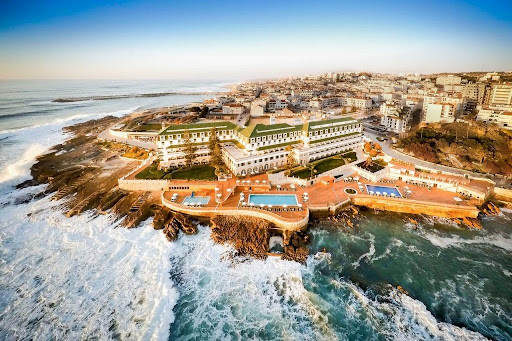
“Escaping” from Lisbon towards this charming fishing village, located just 30 minutes from the capital. Delicious gastronomy where fish and seafood are kings, a relaxed atmosphere, good vibes and a constant view over the deep blue of the Atlantic Ocean, are some of the things that make people constantly return to Ericeira.
Ericeira is no longer the small fishing village that it once was.
Get lost in its streets, have a coffee or enjoy an ice cream at Largo do Jogo da Bola, while admiring the shuttling of people who roam around leisurely.
In 2011 Ericeira officially entered the list of the best surf destinations in the world, when the 8 km strip located between Empa Beach and São Lourenço Beach was classified as a World Surfing Reserve, the only one so far in Europe. Dubbed an “aquatic amusement park”, Ericeira is the delight of any wave lover.
Due to its exceptional location, where high cliffs are nestled next to little sandy coves, Ericeira is a popular destination for surfers from around the world.
Every year since 1985, the beach of Ribeira d’Ilhas has hosted the World Tour Surf Championship.
The wide variety of the waves implies different levels of difficulty and thus provides excellent conditions to practice surf, of course, but also other board sports such as bodyboarding, windsurfing, paragliding, for professionals and amateurs. Ericeira is the perfect European spot for beginners and experienced adrenaline hunters looking for good weather, consistent surf and a fun time.
Mafra
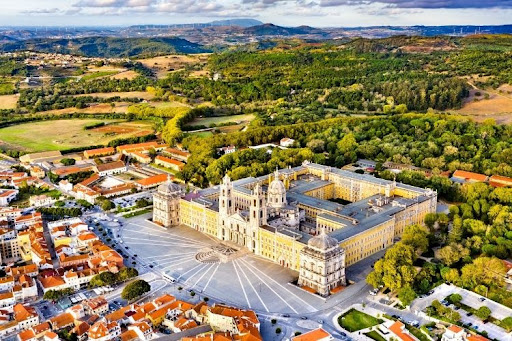
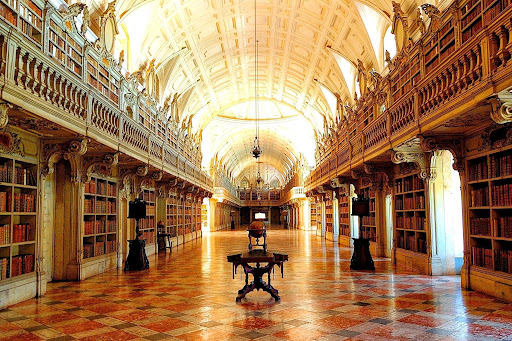
Visit Mafra’s National Palace, a World Heritage Site
I couldn’t speak of Mafra without mentioning, of course, its ex-libris: the National Palace. Built in the 17th century and classified by UNESCO as a World Heritage Site in 2019, the Palace stretches over 40,000 m2 in the centre of Mafra. The feeling you have when you visit is the same as when you visit, for example, the Pena Palace, in Sintra: suddenly, you’re taken on a trip to the time when kings and queens used it as their “vacation” home. There are endless rooms, all kept according to their original layout.
In addition to the Palace, you can also visit the imposing Basilica, where chimes concerts are occasionally held, as well as the Library, which is absolutely incredible. The Palace and the Basilica are open daily ( except Tuesday) from 9:30 am to 5:30 pm and the Library on Mondays, Wednesdays, Thursdays and Fridays from 9:30 am to 4:00 pm (book consultation requires prior booking).
Sintra
Leaving Lisbon’s western suburbs and climbing into Sintra feels like crossing over into another world. This town is in a green mountainscape of palaces, country estates, parks and a medieval castle.
See the enigmatic Quinta da Regaleira, the playground of a wealthy eccentric, or the Pena Palace and its fairytale muddle of towers atop a high peak. You can trek through woodland planted with giant exotic trees in the 19th century. Or carry on to the coast for beaches beneath sky-scraping cliffs, ot Cabo da Roca, at the very edge of mainland Europe.
Lisbon
The Torre de Belém
If there is just one landmark you visit when touring through the Portuguese capital, make it this one.
Soaring high above the seafront of the Lisbon quays, this great tower displays a veritable fusion of architectural styles from the Mudejar to the Moorish, the Gothic to the Romanesque.
It has stood watch over the mouth of the Tagus River since its construction under the patronage of Saint John back in the 16th century.
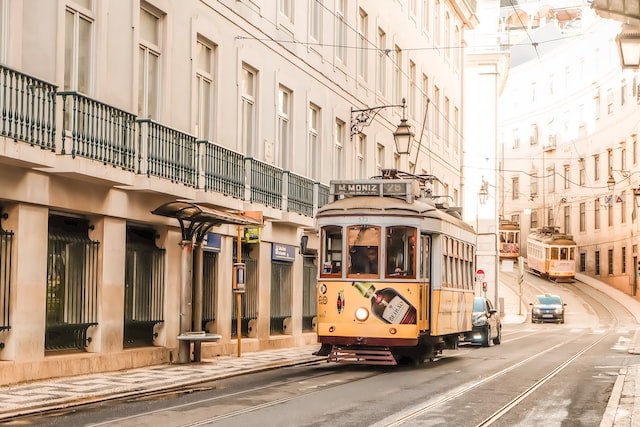
The Torre de Belém
Like San Francisco in the United States, Lisbon is a city famed for its historic, rattling tram lines.
None are more iconic than Tram 28 which has been working its way up the steep, cobbled roads and into the old Alfama district for decades.
The journey starts below the palm-spotted hills of Graça, and weaves toward the hair-pin alleys of Escolas Gerais, before pulling up to a halt beneath the gorgeous domes of the Estrela Basilica.
The people-watching opportunities from the windows are second-to-none, and you’re bound to discover decades of history as you pass the various majestic palaces and castles along the route.
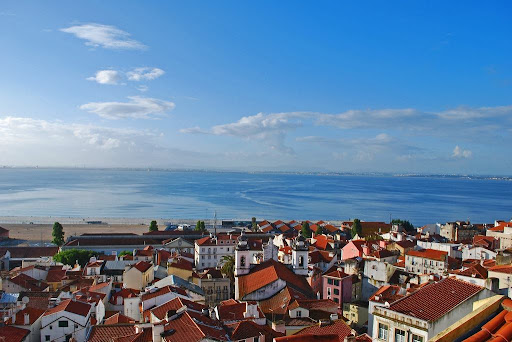
Get lost in the Alfama District
The compact little Alfama District is Lisbon’s answer to the old town centers of Europe’s other ancient capitals.
Like the Forum of Rome, it’s hailed as the oldest part of the city, although this one dates back to the Moors of Africa instead of the kings of Latium.
Delving into the warren of winding streets and alleys that forms the district is one of the top activities for visitors to Portugal’s capital.
As you stroll, great cathedrals like the Lisbon Cathedral and tile-fronted chapels reveal themselves on the corners.
There are also the remains of old city walls and hidden squares with al fresco cafes aplenty.
Monsaraz
The enchanting village of Monsaraz, photo by Travel-Boo
Mention medieval towns and villages in Portugal and most travellers and locals alike will likely mention the walled city of Obidos. But, only about a 2-hour drive inland from Lisbon, you’ll find the gorgeous, white-washed, walled city of Monsaraz.
Given its close locality, around an hour, to another famous walled city, Èvora, you simply have to swing by this fortified village perched up high on a hilltop, especially if planning a day trip from Lisbon to Evora!
Entering through one of the cities gates you’ll feel like you’ve stepped into a bygone era as you walk along the cobbled streets, admire the white-washed homes and buildings and explore the castle walls and bullfighting arena.
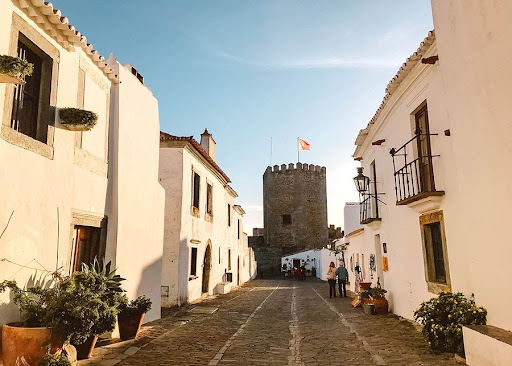
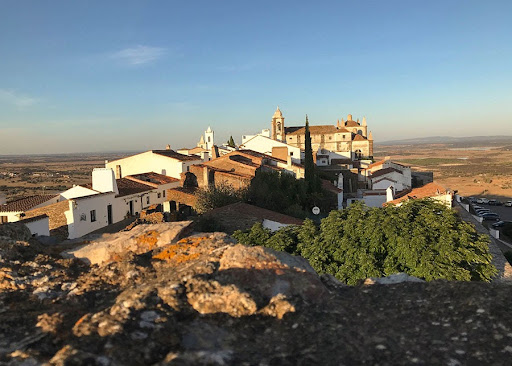
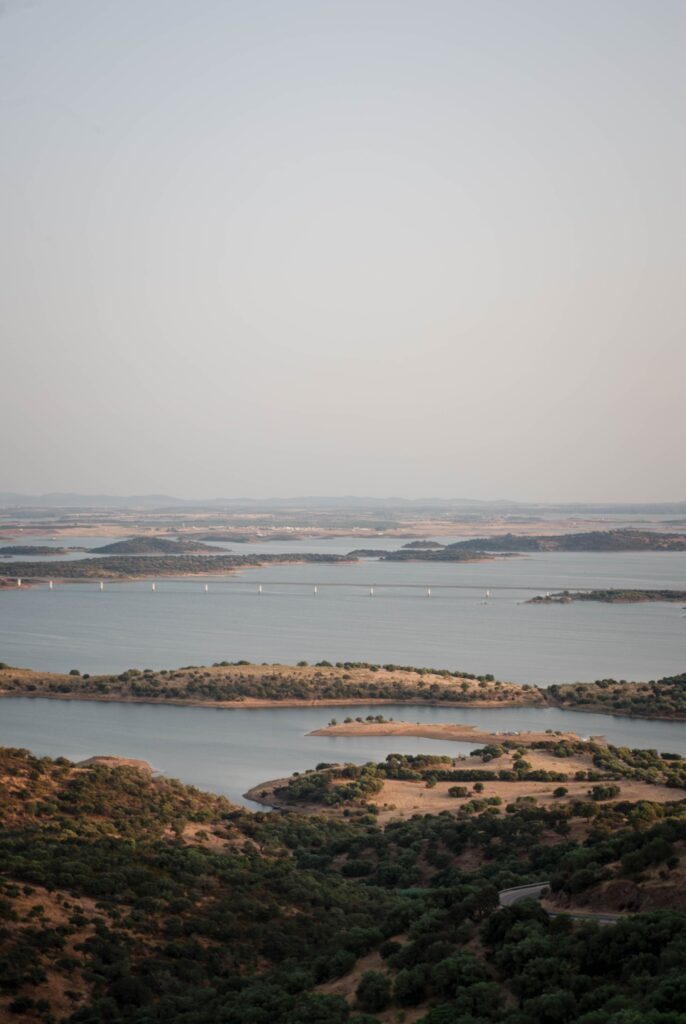
Sines -By Inma from A World to Travel
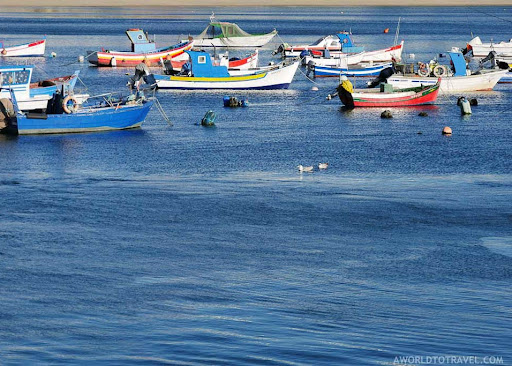

Calm, southern but with a clear Alentejo character, hard-working, unpretentious,and always beautiful; Sines is one of those beautiful small towns in Portugal that I will never get tired of visiting.
Its simple white houses with blue outlined edges are already visible in the distance – especially if you approach the town by boat, and once there you find the smell of the sea and fresh fish is inescapable. Especially if you go down for a walk on the promenade, where the fish market is located that receives fishermen and their catch every morning – and dismisses them every afternoon.
So it is not surprising that good Portuguese cuisine is once again key in this town. All of the restaurants near the port offer fresh fish to visitors for modest prices, especially if the high quality of the product is taken into account. The menu is usually between €10 and €15.
In addition to touring its streets and port, you must include a visit to the castle (with wonderful views over the whole town), to the monument and beach of the explorer Vasco de Gama (who was born in Sines circa 1460) and to São Torpes beach where you can surf if conditions allow.
Sines is a stop that you cannot miss in any Alentejo road trip worth its salt. Enjoy!
Porto Covo -By Campbell & Alya from Stingy Nomads
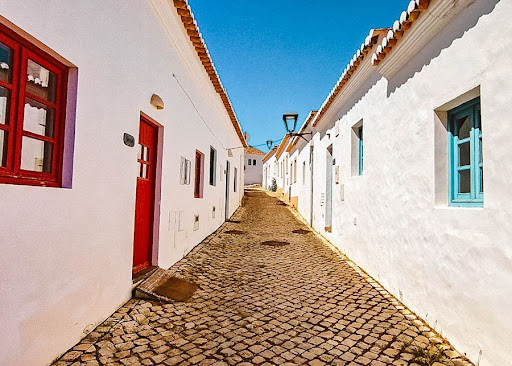
Out of the many Portuguese towns and villages we’ve been to, the small fishing town of Porto Covo is one of our favorites. Porto Covo has a lot to offer to its visitors; charming cobbled streets with traditional fishermen’s houses, delicious food, sandy beaches, and many outdoor activities.
The town is located about 160km south of Lisbon in the Alentejo region. It can be visited as a day trip from Lisbon but it’s definitely worth staying here for a couple of days. Porto Covo is a great place for a weekend escape from the bustling capital, it’s easy to get there from Lisbon. There are several daily buses that leave from Sete Rios Bus Station, the journey takes about 2 hours.
Porto Covo is a very small town; its population is just over 1000 people. The small size doesn’t mean nothing is going on there. The streets of the town are full of life; souvenir shops, restaurants, street cafes, locals and tourists strolling along the narrow streets on the way to and from the beach. The square Jardim do Largo Marquês do Pombal is the center of the social life of this lovely town.
Porto Covo is a gateway to the Costa Vicentina, a part of the protected Portuguese coastline. The town and its surroundings is the perfect place for outdoor activities such as hiking, surfing, cycling, and kayaking. Walking along the coast, following the Fisherman’s Trail, there are amazing views of the town and the surrounding areas. The route starts in Porto Covo and runs along the coast offering stunning scenery.
Ferragudo -By Sabrina from Moon & Honey Travel

Ferragudo is a white-washed fishing town in the municipality of Lagoa in Algarve. Situated at the mouth of the Arade River along the Southern Algarve Coast, Ferragudo occupies a heavenly location. This hidden gem is the perfect base for coastal walking, local-living, and offbeat exploration. The best way to get here is by car. It takes 35-minutes to drive from Lagos to Ferragudo and 50-minutes from Faro.
When you arrive, start your day by exploring the town center and the streets leading up to Igreja de Ferragudo (church). Eat seafood at A Ria or Borda Do Cais, and walk across the Arade River to Rua Infante Dom Henrique (street) for the best views of the town.
The best place for sunset is the sun-kissed Praia dos Caneiros. This gorgeous beach also marks the beginning of the Trail of Headlands, a coastal walk that starts in Ferragudo and ends in Carvoeiro. This 6 km trail takes 2 hours one-way. When you make your way back to Praia dos Caneiros, treat yourself to dinner at Rei das Praias.
If you’re looking for more beach options, also check out Praia da Angrinha and Praia Grande. Use this Algarve road trip to plan out your days in Ferragudo and the Algarve.
Carvoeiro -By Darek from DarekandGosia.com
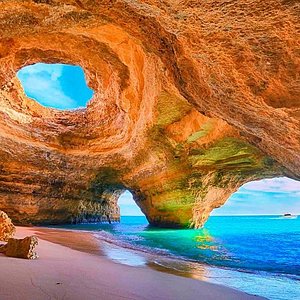
If you are looking for beautiful places to visit while on holiday in Portugal, you have to head out to the Algarve. This stunning southern region of Portugal is full of charming towns and villages – and one of them is Carvoeiro, a small town located 65 km from Faro.
The town is located in central Algarve making it a great place to stay if you are planning to spend long holiday in the Algarve.
Carvoeiro’s history dates back to the 16th century, when pirates ruled in the bay. The steep coast was a perfect shelter for them. For the following centuries it was just a sleepy fishing town.
In the 1960s, thanks to its spectacular beaches, it became one of the most popular holiday destinations in Portugal. And it’s no wonder! Carvoeiro was built on rocky cliffs, which makes the town one of the most beautifully situated resorts in the whole of Portugal.
There are many great things to do around Carvoeiro too. From walking the picturesque cliff top Carvoeiro Boardwalk, visiting stunning Algar Seco or finally going for a boat trip to Benagil Cave. There is no shortage of beautiful places around the Carvoeiro town!



